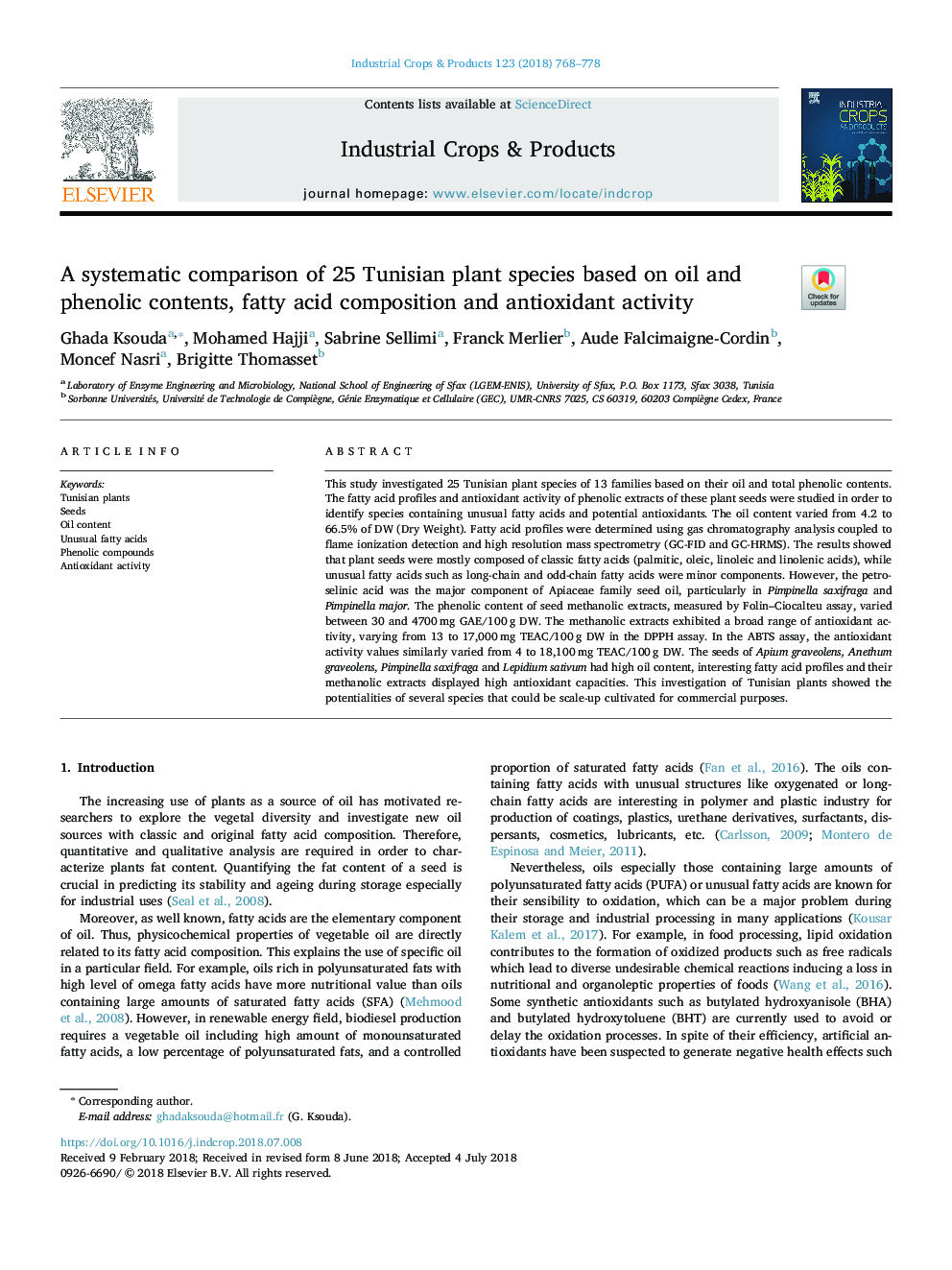| کد مقاله | کد نشریه | سال انتشار | مقاله انگلیسی | نسخه تمام متن |
|---|---|---|---|---|
| 10116995 | 1624787 | 2018 | 11 صفحه PDF | دانلود رایگان |
عنوان انگلیسی مقاله ISI
A systematic comparison of 25 Tunisian plant species based on oil and phenolic contents, fatty acid composition and antioxidant activity
ترجمه فارسی عنوان
یک مقایسه سیستماتیک از 25 گونه گیاهی تونسی بر اساس محتوای نفت و فنل، ترکیب اسید چرب و فعالیت آنتی اکسیدان
دانلود مقاله + سفارش ترجمه
دانلود مقاله ISI انگلیسی
رایگان برای ایرانیان
کلمات کلیدی
گیاهان تونس، دانه، محتوای نفت، اسیدهای چرب غیر معمول، ترکیبات فنل، فعالیت آنتیاکسیدانی،
موضوعات مرتبط
علوم زیستی و بیوفناوری
علوم کشاورزی و بیولوژیک
علوم زراعت و اصلاح نباتات
چکیده انگلیسی
This study investigated 25 Tunisian plant species of 13 families based on their oil and total phenolic contents. The fatty acid profiles and antioxidant activity of phenolic extracts of these plant seeds were studied in order to identify species containing unusual fatty acids and potential antioxidants. The oil content varied from 4.2 to 66.5% of DW (Dry Weight). Fatty acid profiles were determined using gas chromatography analysis coupled to flame ionization detection and high resolution mass spectrometry (GC-FID and GC-HRMS). The results showed that plant seeds were mostly composed of classic fatty acids (palmitic, oleic, linoleic and linolenic acids), while unusual fatty acids such as long-chain and odd-chain fatty acids were minor components. However, the petroselinic acid was the major component of Apiaceae family seed oil, particularly in Pimpinella saxifraga and Pimpinella major. The phenolic content of seed methanolic extracts, measured by Folin-Ciocalteu assay, varied between 30 and 4700â¯mg GAE/100â¯g DW. The methanolic extracts exhibited a broad range of antioxidant activity, varying from 13 to 17,000â¯mg TEAC/100â¯g DW in the DPPH assay. In the ABTS assay, the antioxidant activity values similarly varied from 4 to 18,100â¯mg TEAC/100â¯g DW. The seeds of Apium graveolens, Anethum graveolens, Pimpinella saxifraga and Lepidium sativum had high oil content, interesting fatty acid profiles and their methanolic extracts displayed high antioxidant capacities. This investigation of Tunisian plants showed the potentialities of several species that could be scale-up cultivated for commercial purposes.
ناشر
Database: Elsevier - ScienceDirect (ساینس دایرکت)
Journal: Industrial Crops and Products - Volume 123, 1 November 2018, Pages 768-778
Journal: Industrial Crops and Products - Volume 123, 1 November 2018, Pages 768-778
نویسندگان
Ghada Ksouda, Mohamed Hajji, Sabrine Sellimi, Franck Merlier, Aude Falcimaigne-Cordin, Moncef Nasri, Brigitte Thomasset,
